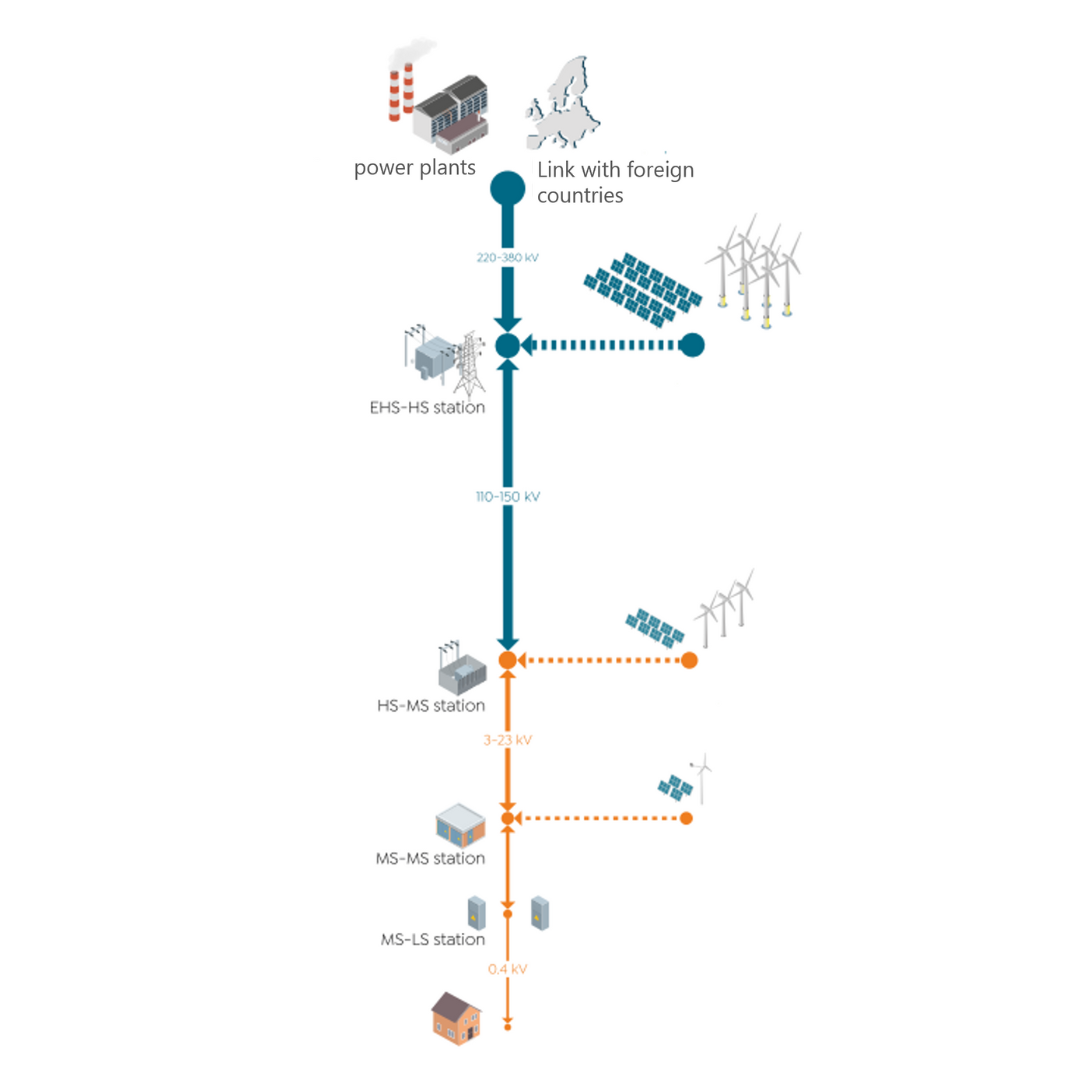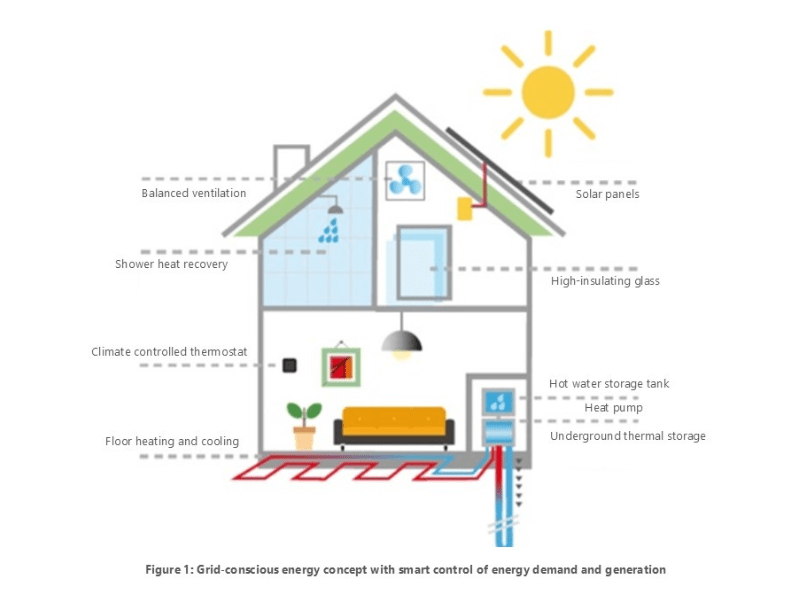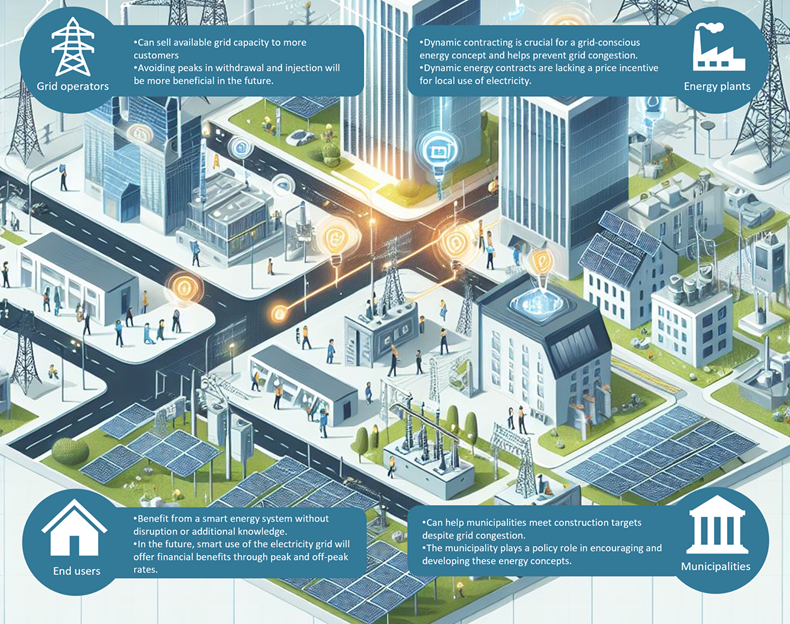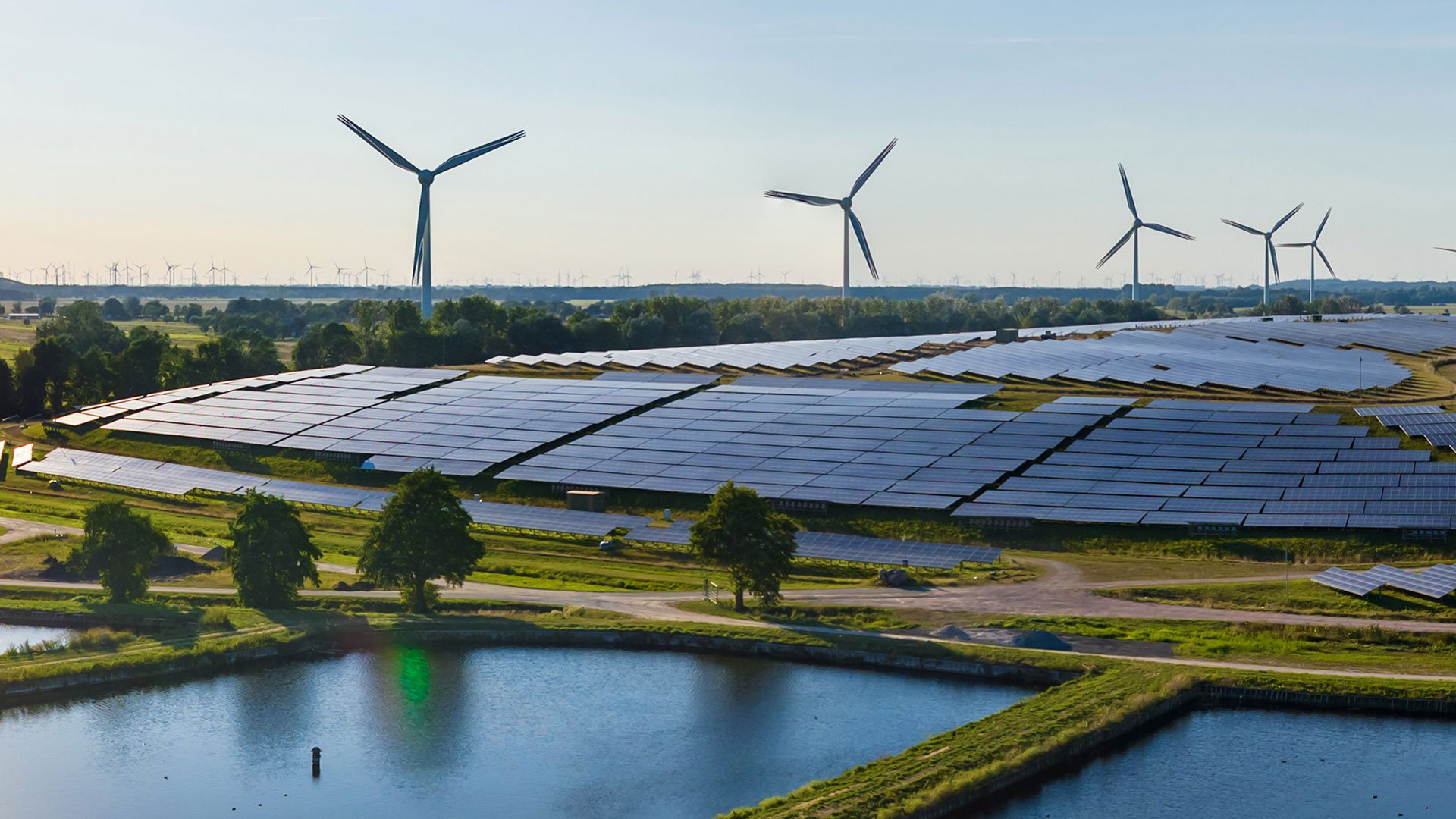Energy hub in the built environment: the transition to sustainable energy


The transition to sustainable energy in urban areas faces significant challenges, with grid congestion increasingly slowing down progress. The rise of solar panels, electric vehicles and collective heating systems has maxed out grid capacity in many residential areas, creating bottlenecks. With national electrification goals on the horizon, a strategic approach to developing energy hubs in the built environment has never been more important.
Grid-conscious energy development
The concept of grid-conscious energy development focuses on creating energy solutions that place minimal demand on both electricity uptake and feedback on the low-voltage grid. By maximising local consumption of locally generated power, grid congestion can be mitigated and the pressure on regional and national grids reduced. These grid-conscious energy concepts enable the energy system to operate at peak efficiency and allow more renewable energy sources to be added to urban networks without causing strain.
1. Reducing energy demand
Energy efficiency is the foundation of any grid-conscious energy concept. For new developments, builders can target minimal energy demand per square metre by adhering to stringent energy performance standards, such as nearly zero energy building (NZEB) requirements. For existing buildings, high insulation standards can help reduce heating, cooling and electricity demands. By lowering overall demand, this first step alleviates pressure on the grid and sets the stage for a sustainable energy balance in the area.
2. Utilising efficient energy conversions
The next step is to deploy efficient heating solutions, such as individual heat pumps or collective systems, based on strategic analysis at the neighbourhood level. A careful choice of heat sources – air versus ground source heat pumps, for instance – has a significant impact on grid demand. Here, intelligent timing and the use of heat production prevent peak demand, helping ease the load on the grid.
3. Matching demand and supply in the home
Energy management systems (EMS) are pivotal in synchronising electricity use with times of local renewable energy generation. For instance, an EMS can prioritise hot water production during sunny periods when solar power is abundant. Similarly, it can manage electric vehicle (EV) charging at off-peak times. By distributing demand to times with less overall grid load, an EMS can optimise both costs and energy usage, minimising the impact on residents’ daily routines.
4. Integrating energy storage solutions
Thermal energy storage and batteries serve as buffers to further alleviate peak demand. When managed by the EMS, these storage options can smooth out peaks by storing energy when demand is low and releasing it when demand rises. Thermal storage prevents heat pumps from contributing to peak loads, while building-level batteries help flatten electricity demand spikes, enhancing grid stability.
5. Balancing external demand and supply
Effective energy hubs go beyond managing internal energy flows by balancing demand and supply on a broader level. Coordinated use of heat pumps, smart EV chargers and battery storage across neighbourhoods prevents unnecessary grid strain, as these systems can respond to grid capacity availability signals. Dynamic pricing and capacity contracts with grid operators, which incentivise grid-friendly behaviour, can be instrumental in optimising energy flows and managing energy costs.
6. Temporary backup generation as a last resort
If grid capacity remains constrained despite these steps, temporary local power generation may be necessary. Fossil-fuel-free generators, such as hydrogen or biogas units, can provide backup power until grid upgrades are completed. This temporary solution ensures energy reliability while preserving progress towards net-zero goals.

Stakeholder benefits on energy hubs
The benefits of energy hubs are broad, extending to all stakeholders:
- For end-users, smart systems reduce energy costs and maximise the use of renewable energy without the need for technical expertise.
- Grid operators can offer services to more customers by balancing local use and avoiding costly upgrades.
- Energy providers could implement dynamic energy contracts at the neighbourhood level, enhancing efficiency and promoting local energy use.
- Municipalities gain a powerful tool to meet sustainability targets, even in congested grid areas, and play a role in encouraging grid-conscious policy development.

What’s next?
The development of energy hubs in the built environment requires collaboration across sectors and clear strategic planning. In the next blog, we will continue exploring the practical steps toward creating resilient, sustainable and interconnected urban energy systems, with the goal of peak-shaving grid congestion.For further details, please visit Energy Hub or contact our team directly to discuss how we can support you to an efficient, grid-conscious urban energy solution.
Contact our experts
Always up-to-date on latest energy insights?

